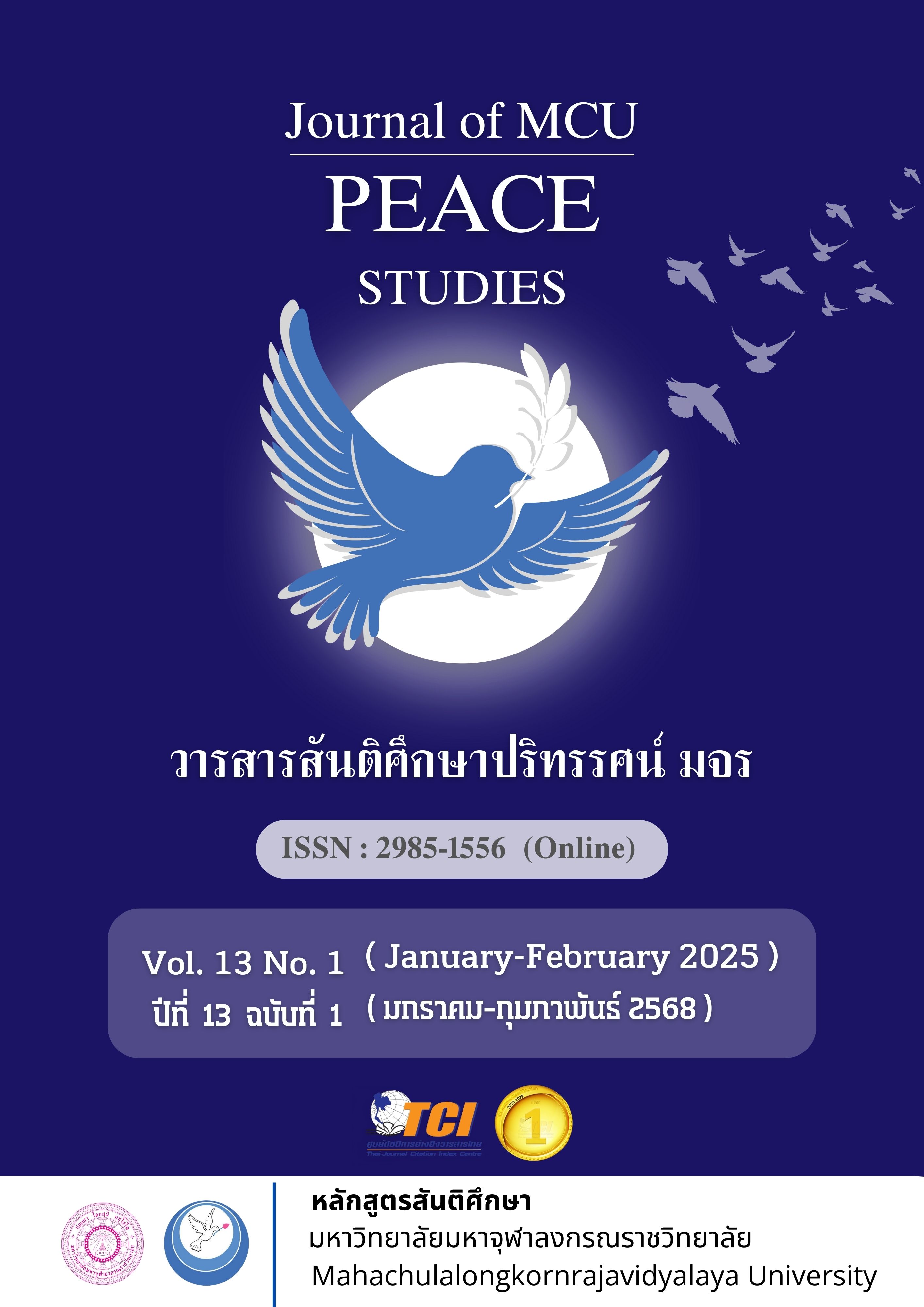Development of a Management Model for Teaching Centers for Additional Courses Developed by Educational Institutions according to the Needs of Business Establishments in the Higher Vocational Certificate Program, Dual System, under the Office of the Vocational Education Commission
Main Article Content
Abstract
This research aims to: 1) Study the current conditions and the needs for developing an administrative model for subject management centers at educational institutions, which have been further developed according to the requirements of workplace in the Advanced Diploma (Higher Vocational Certificate) Program under the Dual Vocational Education System, supervised by the Office of the Vocational Education Commission (OVEC). 2) Develop and evaluate the appropriateness of the proposed administrative model for subject management centers, designed to align with workplace demands within the Advanced Diploma (Higher Vocational Certificate) Program under the Dual Vocational Education System of OVEC. The sample group for this study comprised: 1) Public vocational institutions under OVEC. 2) Workplace and 3) Students. The research tools consisted of: 1) A questionnaire assessing the current issues and the necessity of developing an administrative model for subject management centers at educational institutions in line with workplace requirements under the Advanced Diploma (Higher Vocational Certificate) Program within the Dual Vocational Education System. 2) An evaluation form to assess the appropriateness of the proposed administrative model for subject management centers in accordance with workplace demands. Data analysis was conducted using mean ( ), standard deviation (S.D.), and focus group discussions.
The research results were: 1) Current Conditions and Development Needs. The overall findings indicate that the necessity for developing an administrative model for subject management centers at educational institutions, in response to industry demands, was at a high level ( = 4.05, S.D. = 1.03). The study prioritized six key areas of concern and necessity, ranked from highest to lowest: Assessment and evaluation of vocational training in institution-developed courses tailored to workplace needs. Management of the dual vocational education system. Vocational training in workplace. Curriculum development for institution-developed courses aligned with workplace needs, particularly in elective professional competencies. Planning of vocational training for institution-developed courses. Establishment of subject management centers for institution-developed courses within both workplaces and vocational institutions. All identified areas were considered essential and can serve as a framework for enhancing the administration of subject management centers to better meet workplace demands. 2) Development and Evaluation of the Administrative Model. The development of the administrative model was based on the findings from objective 1 and structured using the Deming Cycle (PDCA: Plan-Do-Check-Act). An expert evaluation (n=11) confirmed that the proposed model consists of four components with thirteen sub-processes, as follows: Planning (P: Plan)–4 sub-processes. Implementation (D: Do)–3 sub-processes. Execution in workplaces (C: Check)–5 sub-processes. Evaluation (A: Action)–1 sub-process. The overall appropriateness of the model was rated at the highest level (
= 4.76, S.D. = 0.39). Therefore, the proposed model is deemed appropriate as a guideline for the effective administration of subject management centers at educational institutions, ensuring alignment with workplace requirements and enhancing overall operational efficiency.
Article Details

This work is licensed under a Creative Commons Attribution-NonCommercial-NoDerivatives 4.0 International License.
Views and opinions expressed in the articles published by The Journal of MCU Peace Studies, are of responsibility by such authors but not the editors and do not necessarily reflect those of the editors.
References
Dual Vocational Education Center. (2023). Dual Vocational Education-Data. Retrieved February 24, 2025, from https://dve.cm.in.th
Krejcie, R. V., & Morgan, D. W. (1970). Determining Sample Size for Research Activities. Journal of Education and Psychological Measurement, 30(3), 607-610.
Marnphae, N. (2018). The Management Planning Model of Dual Vocational Training of Technical College under the Office of the Vocational Education Commission. (Doctoral Dissertation). Phranakhon Si Ayutthaya Rajabhat University. Phranakhon Si Ayutthaya
Office of the Education Council. (2017). The National Education Plan B.E. 2560-2579 (2017-2036). Bangkok: Prikwarn Graphic.
Office of the Vocational Education Commission. (2019). Vocational Education Management Standards, Vocational Certificates, and Higher Vocational Certificates No. 8: Bilateral Vocational Education Management. Bangkok: Office of the Vocational Education Commission.
Office of the Vocational Education Commission. (2024). Higher Vocational Certificate Program 2024. Bangkok: Office of the Vocational Education Commission.
Saengchan, T., Wisetsena, Ch., Chuanchom, S., & Tanya, S. (2021). The Effective Dual Vocational Administration Model for Institutionsunder the Office of Vocational Education Commission. Sikkha Journal of Education, 8(2), 76-85.
Sathitmon, U., Kaongernand, M., & Sakorn, J. (2021). Module Curriculum Development and Upgrading Logistics English Language Proficient Enhancement in Industrial Sector. SSRU Journal of Public Administration, 4(3), 125-138.
Tupwong, J. (2022). Learning and Instruction Model for Enhance Quality Administration Dual Vocational Education of Bangpakong Industrial and Community Education College Chachoengsao Province. Vocational Education Central Region Journal, 6(1), 24-33.

